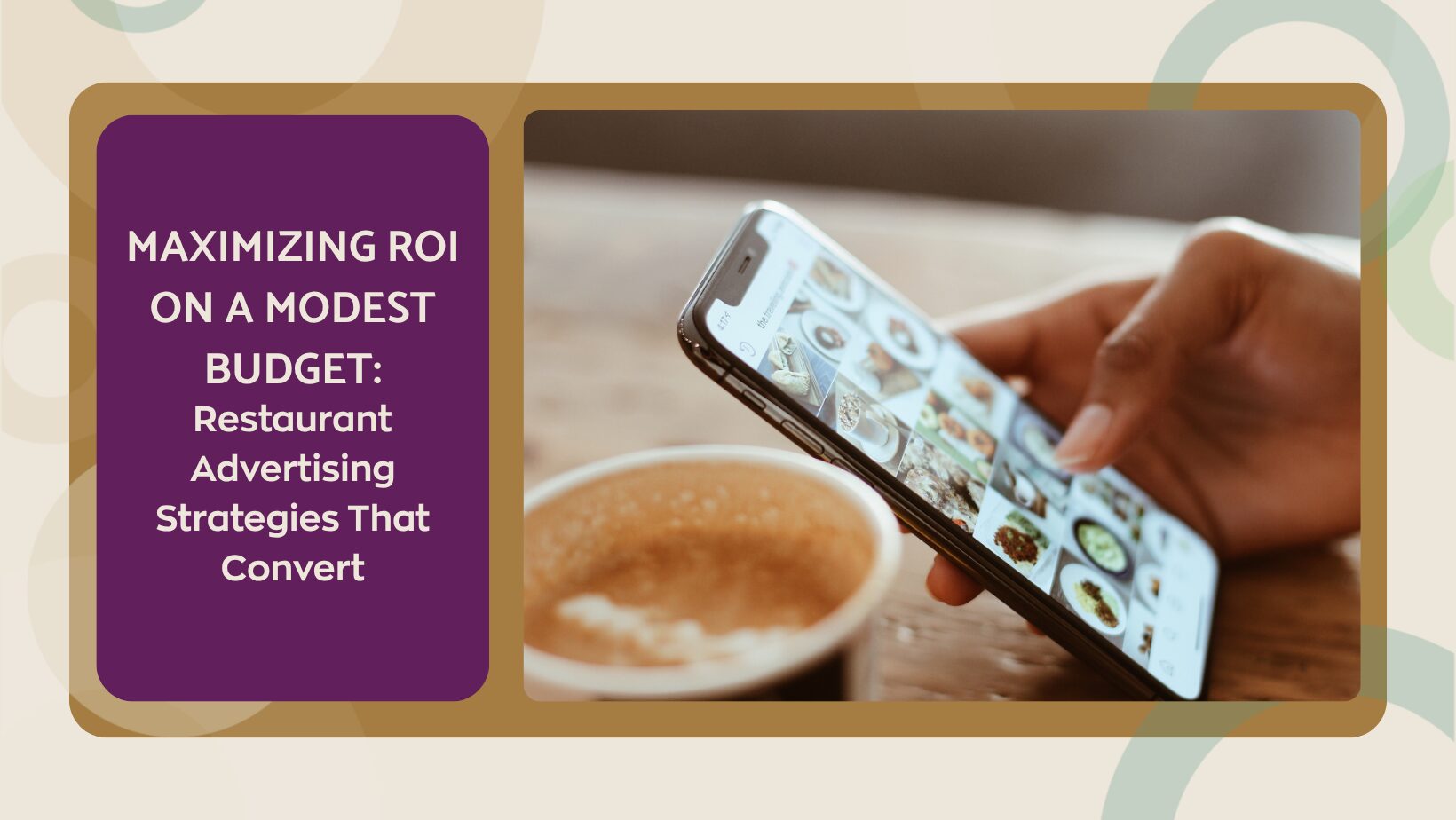
For independent restaurants and bars, paid advertising can often feel like a gamble. Many operators are working with razor-thin margins and tight budgets, which makes strategic allocation of ad spend essential. At Embark Marketing, we specialize in maximizing ROI by blending tactical media buying, content-driven storytelling, and behavioral marketing insights, all tailored to the hospitality industry.
A strategic media plan doesn’t require a five-figure budget. With as little as $300 a month, you can build targeted campaigns that influence customer behavior and drive foot traffic when and where it matters most.
Building a Split Strategy: Conversion vs Awareness
When building a restaurant ad strategy with limited funds, we recommend a bifurcated approach that accounts for both conversion-focused performance marketing and top-of-funnel brand awareness.
In practical terms, that means splitting a $300 monthly budget into two campaigns:
- $150 for a time-bound conversion campaign aimed at driving traffic during a specific daypart, such as lunchtime on Tuesdays or Saturday evenings.
- $150 for an evergreen awareness campaign designed to keep your brand top-of-mind with local consumers over time.
This dual-campaign structure satisfies two distinct marketing objectives: immediate transactional lift and long-term equity building for the brand as a whole.
Tactic 1: Time-Based Behavioral Triggering
Consumer behavior is largely driven by habits and heuristics. By placing a timely offer in front of your audience on a predictable schedule, you begin to condition responses through repetition, a fundamental concept in behavioral psychology.
In one recent example, a client sought to increase lunch traffic. We developed a lunchtime special, crafted content highlighting its value proposition, and deployed it via Meta (Facebook and Instagram) using tight geofencing and demographic filters. The redemption mechanism required users to follow the page and show the post in-store, which tapped into social validation cues and exclusivity bias.
The result was a noticeable increase in saves, comments, and in-store mentions. The campaign sparked new visitation patterns and was later validated through POS data and qualitative feedback from servers.
Tactic 2: Always-On Local Brand Penetration
Parallel to the time-sensitive promotion, we deployed a persistent awareness campaign. This ad served lifestyle visuals, brand messaging, and menu highlights to nearby users. The goal here was not to close the sale immediately. Instead, it was to reinforce the restaurant’s presence within the local mindshare and create multiple touchpoints before conversion.
It is important to note that the average consumer needs 7 to 10 exposures to a brand before taking action. By remaining consistently visible, especially on platforms where users spend daily screen time, restaurants increase the likelihood of both unprompted visits and top-of-mind recall.
This approach taps into availability bias. When your brand is consistently seen, it becomes the easiest and most familiar choice when hunger strikes.

Duration: Why Restaurant & Bar Advertising Campaigns Need Time to Perform
A common pitfall among small business advertisers is prematurely judging ad performance. In reality, effective campaigns need a minimum of three months to gather data, optimize delivery, and influence behavior.
Here is why:
- Ads require time to reach frequency thresholds that prompt action
- Social proof builds over time through engagement metrics
- Word of mouth spreads incrementally, especially in local communities
- Consumers build new habits over repeated exposures, not one-off impressions
If you are planning a seasonal campaign such as a Mother’s Day promotion, execution needs to start at least three to four weeks in advance. You are not just selling a plate of food. You are selling an idea, a plan, and a reason to act. That takes lead time to resonate with your audience.
KPIs and Signals That Matter
Even modest campaigns need to be data-driven. Key performance indicators include:
- Reach and frequency, which show how many people saw your ad and how often
- Saves, shares, and comments, which are indicators of engagement and interest
- Click-through rate (CTR), which measures how effectively your creative drives action
- Return on ad spend (ROAS), especially when tracked through online ordering or offer redemption
- Staff feedback and POS comparisons, which offer valuable qualitative validation
We also monitor attention metrics like video completion rates and relevance scores from the platform to refine and improve ongoing campaign performance.
Strategic Spend Can Still Make an Impact
Advertising does not need to be overwhelming or expensive to work. When you apply a layered strategy rooted in behavioral principles and platform best practices, even a small budget can generate meaningful returns.
At Embark Marketing, we craft tailored ad campaigns that speak directly to your audience at the right time and with the right message. If you are ready to turn data into diners and content into conversions, contact our team today. Let us help you make every dollar count.
